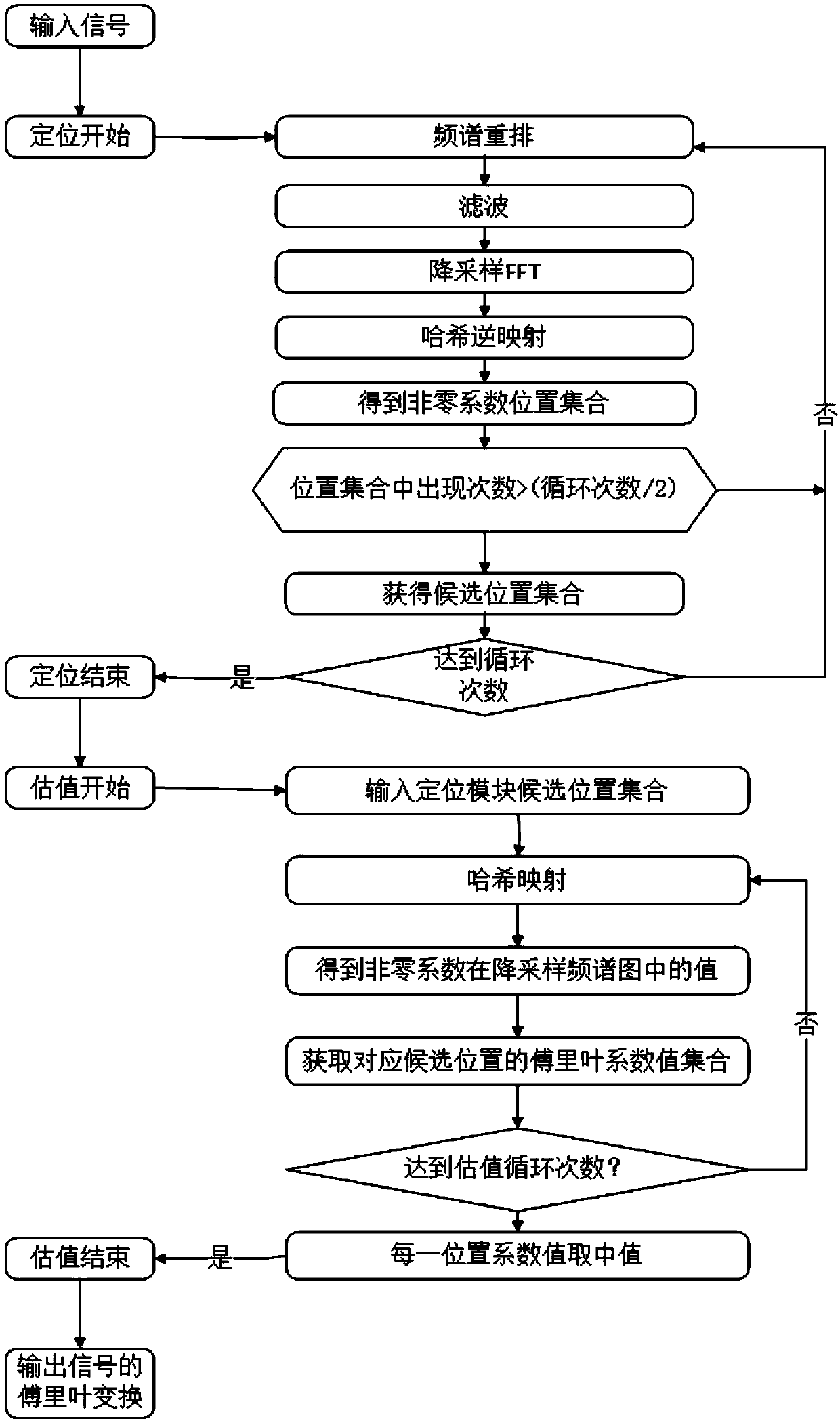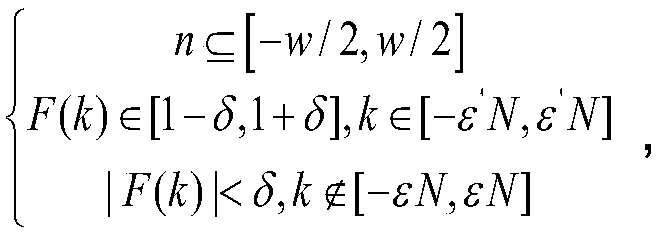Fourier transform algorithm for reducing time loss
A Fourier transform and algorithm technology, applied in the field of signal processing and time-frequency analysis, can solve the problem of limited use of the transform domain, and achieve the effect of improving transform efficiency, improving computing efficiency, and ensuring efficiency
- Summary
- Abstract
- Description
- Claims
- Application Information
AI Technical Summary
Problems solved by technology
Method used
Image
Examples
Embodiment Construction
[0049] Such as figure 1 As shown, the present invention discloses a Fourier transform algorithm that can reduce time loss, comprising the following steps:
[0050] S1. The positioning step is to estimate the position of non-zero Fourier coefficients or important coefficients in the frequency domain of the signal through multiple loop iterations to obtain position data;
[0051] S2. The estimation step is to estimate coefficient values corresponding to these position data through multiple loop iterations according to the obtained position data;
[0052] S3. In the transformation step, according to the obtained position data and the corresponding coefficient values, set in the all-zero output sequence, complete the Fourier transformation of the signal, and output the result.
[0053] The positioning step described in S1 specifically includes:
[0054] S11, the spectrum rearrangement step, in order to reduce the complexity of calculating the Fourier transform of the signal, the...
PUM
 Login to View More
Login to View More Abstract
Description
Claims
Application Information
 Login to View More
Login to View More - R&D
- Intellectual Property
- Life Sciences
- Materials
- Tech Scout
- Unparalleled Data Quality
- Higher Quality Content
- 60% Fewer Hallucinations
Browse by: Latest US Patents, China's latest patents, Technical Efficacy Thesaurus, Application Domain, Technology Topic, Popular Technical Reports.
© 2025 PatSnap. All rights reserved.Legal|Privacy policy|Modern Slavery Act Transparency Statement|Sitemap|About US| Contact US: help@patsnap.com



